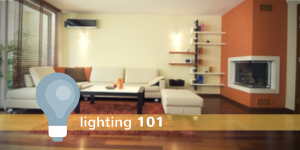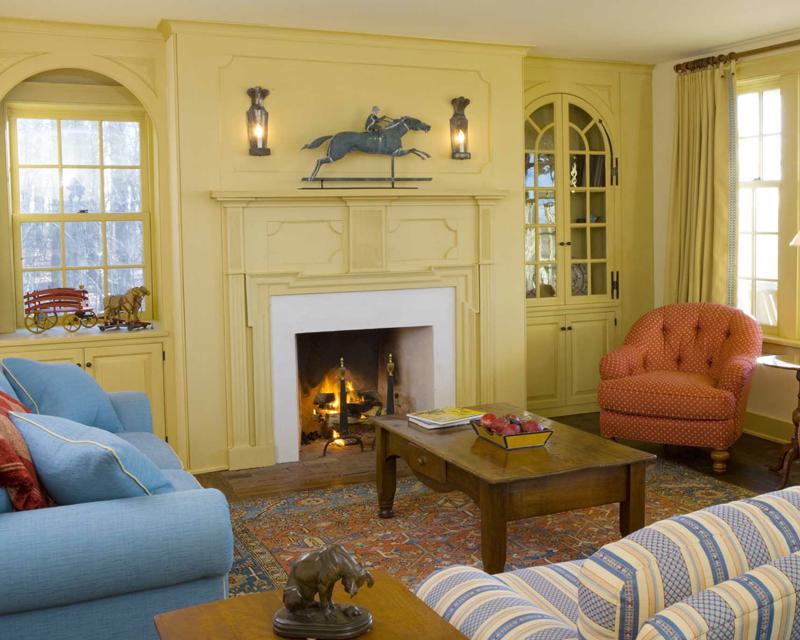
Before you start your home lighting project, it's important to learn the right lighting terminology.
Remodeling your home with new light fixtures is a big task, and as you do some research on the best options, you may run across some terms you're not completely familiar with. Knowing your light terminology is a great way to visualize your home lighting project and it could make the process a lot easier.
Get the lighting 101 and make sure you're up to date with your home lighting knowledge. Here are some helpful terms you should know about:
1. Task lighting
Task lighting is essential to get the best light when you're reading a book on your couch, cutting up vegetables in the kitchen or getting ready in the morning in your bathroom. This light assists you with additional light from the other artificial or natural light in the room. Table lamps, bathroom mirrors and under cabinet kitchen lights are all forms of task lighting.
2. Ambient lighting
Another term for a way to use light is ambient lighting. For general illumination, whether it's inside or outside, ambient lighting is necessary. Generally, when you come home at night and turn on your lights, you simply want to see everything around you so you have a clear path. Ambient lighting is the standard type of lighting used for security and safety around and outside of the home.
 Wall sconces work well over mantelpieces, in hallways or above beds.
Wall sconces work well over mantelpieces, in hallways or above beds.3. Accent lighting
If you want to focus the attention on a specific item, such as a flowerbed, a piece of artwork on the wall or a cluster of photos, accent lighting is needed. This type of lighting tool lets you hone in on a specific object to highlight its qualities. Accent lighting is typically used to draw attention to a particular part of your home.
4. Direct lighting
Often cast downward, direct lighting comes directly from the light fixture to give a light source with a consistent amount of illumination. This can be used indoors or outdoors to help spread the light more evenly.
"Cooler lights are higher and warmer lights are lower on the Kelvin scale."
5. Light dimmer
Light dimmers are used to control and regulate the light levels. With dimmers, you can have softer, more comfortable light and switch it to be bright and illustrious. If you're watching a movie in your living room, you may want to dim the lights to avoid glare on your television, but if you take a break, you can turn up the brightness to grab a snack or to find the remote.
6. Light timer
To get your lights automated, you can use a light timer. This allows you to have lights come on or turn off at certain times. This is convenient to set if you come home late at night and know you'll arrive to a well-lit home. Light timers also help you save energy by being more efficient when you have your lighting on.
7. Lumen
The measurement of light that comes from a lamp is known as a lumen. Lumens measure the perceived power of the light, and they are typically used to gauge the amount of light generated from a single bulb.
8. Blue LED
A Light Emitting Diode is a semiconductor formulate that emits light of a specific color. For blue LEDs, have a much narrower spectrum of light. However, they can span across the entire blue spectrum because of its wavelengths.
9. White LED
White LED lighting can cover every color spectrum. The most common purpose for white LEDs includes task lighting and other home interior lighting purposes.
10. Color temperature
Since lights work in different temperatures, it's easy to choose bulbs that cast lighter hues or warmer colors. Color temperature is measured on the Kelvin scale. Cooler lights that create a blue or white light are higher on the Kelvin scale, while warmer orange and yellow lights are lower on the scale.
11. Light filters
To give a glossy finish, light filters are an ideal accessory to change the beam of the light. Filters can be metal, which alters the light from the fixture.
12. Pendant
A pendant is a hanging type of light fixture that does not have any arms. It simply hangs downward with a glass or diffuser opening. This ornamental light source is often used in kitchens and dining rooms.
13. Sconce
This is a decorative light fixture that is often cylindrical or box-shaped and does not cast any shadows or glare. These fixtures serve as good sources of lighting and typically work with the surface or wall on which they are placed.
14. CFL
Compact florescent light bulbs, while not as efficient as LEDs, are compressed into the size of a standard incandescent, but use quarter of the power.
15. Incandescent
Incandescent light bulbs were used for decades and product light from the hot filament inside. These are outdated and even the U.S. Energy Department is trying to move consumers away from these energy-gobbling light bulbs.
16. Halogen
For longer operating life and higher luminous efficacy, halogen light bulbs are preferred over incandescent bulbs. Additionally, they use much less energy.
17. Kilowatt
Commonly abbreviated as (kwh), a kilowatt a measure of 1,000 watts of electrical power.
18.Underwriters Laboratories (UL)
This global independent safety science company provides safety solutions for new technologies and electrical devices.
19. Xenon
For xenon light bulbs, these come in both low voltage options and light up through xenon gas. This helps extend the life of the light bulb and has a rated life of 10,000 hours when compared to a halogen that has only 2,000 hours. Xenon lamps also emit much less heat than halogen light bulbs.

